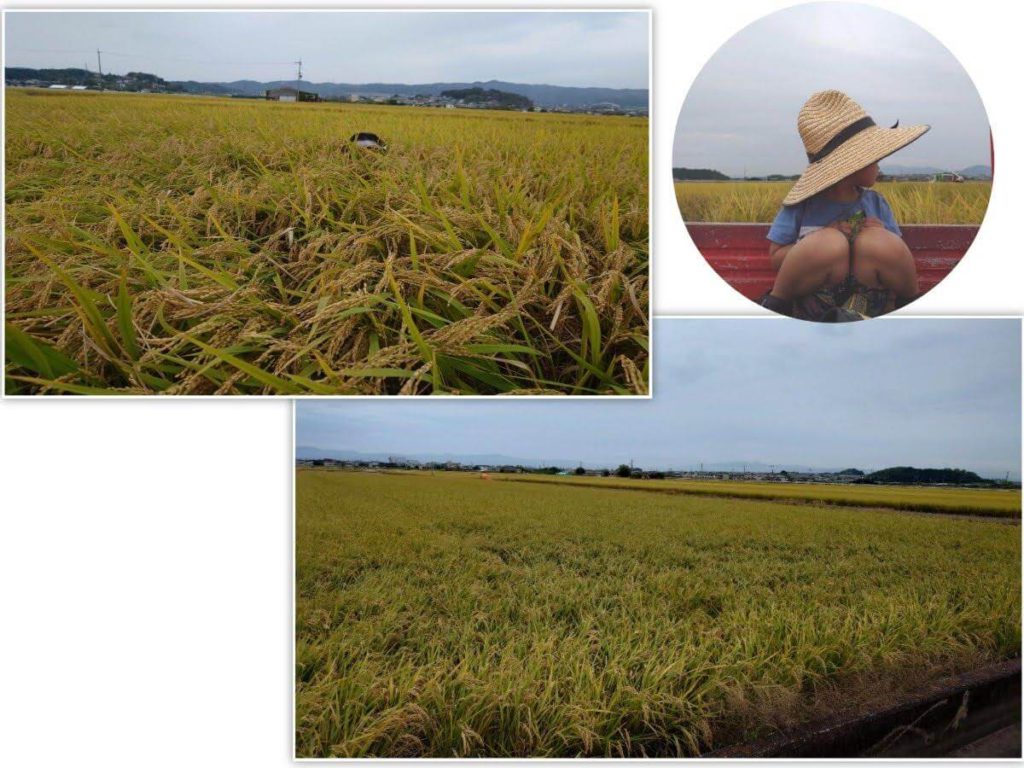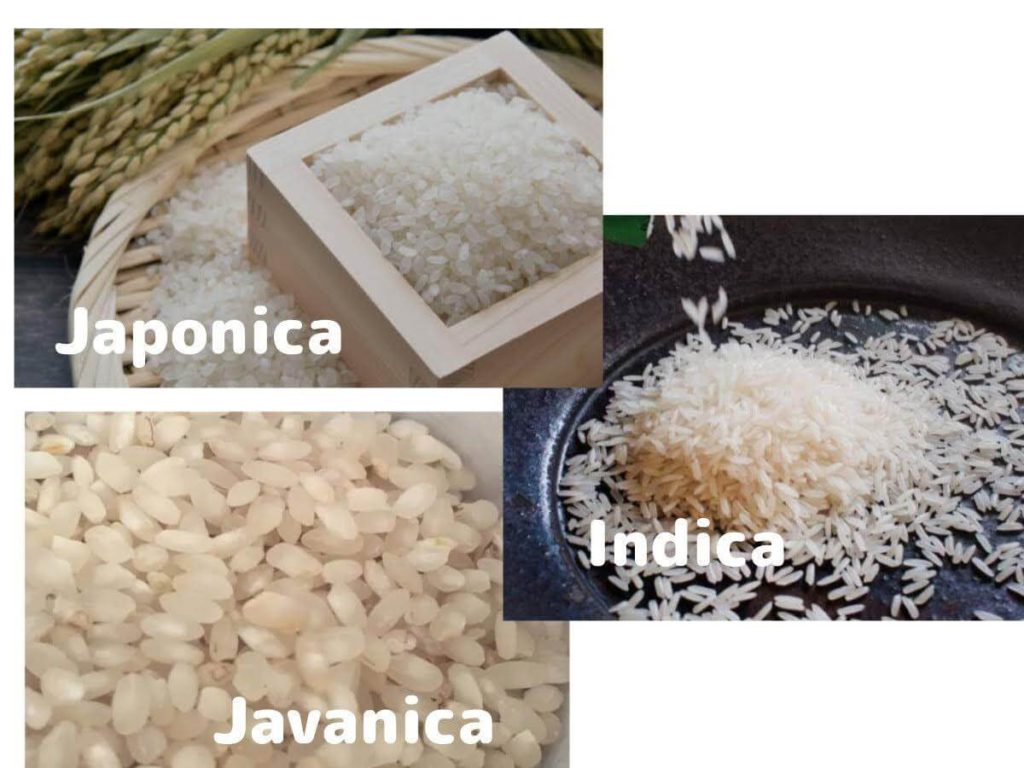Hot summer is gone. The sky color has changed, the clouds have changed, and the wind has changed.
Yes! The beautiful autumn is here!
I was born and raised in Ikaruga in Nara Prefecture, where there is Horyuji Temple, which is the oldest wooden structure in the WORLD, and the first World Heritage site in Japan.
When I was a child, I lived in a real countryside area surrounded by rice fields and farms. Now, why do I remember the rice harvest in the autumn? It’s because my family are farmers. We grow rice, vegetables, and fruits, so I grew up in a life closely connected with the season. Just the other day, I received a message from my father saying, “We will harvest rice on this day. So please be ready!” And once again I thought about rice and decided to talk about this topic today.

According to “The Travels of Marco Polo,” written by the Italian merchant Marco Polo, Japan was referred the Land of Gold, Zipangu. There are various theories as to why he called Japan that, including because gold nuggets were found there or temples were made of gold. But I’ve always thought this: Marco Polo must have arrived in Japan in the autumn and seen this view: fields of rice spread out as far as we can see with our eyes… Autumn, that is the season when the rice shines golden.
Types of Rice


First of all, let’s talk about the kinds of rice we’ve got in Japan. There are reportedly over 100,000 varieties of rice when classified in detail, but they can be broadly divided into three main types: Japonica rice, Indica rice, and Javanica rice. The type that we Japanese love the most and consume most frequently is Japonica rice.
Japanese rice has the distinctive quality of maintaining its taste even after being cooked, and the more you chew it, the sweeter it becomes. Japanese cuisine, or washoku, evolved with the concept of “kouchu chomi (口中調味),” which involves mixing side dishes and rice in your mouth as you eat. Additionally, various seasonings used in Japanese cuisine, such as miso, soy sauce, vinegar, and mirin, are all made from rice, and it is also used in sake production. It’s no exaggeration to say that rice is the foundation of many flavors in Japan.
In autumn, the new rice harvest begins.
Let’s cook delicious rice and enjoy Japan’s tasty new-season rice!
How to Cook Rice
1. Rinse the Rice: ~ The taste is determined by how well you clean off the bran.
Rice has “nuka” (bran), which comes off when brown rice is milled. Although milling technology has improved significantly, how thoroughly you remove the bran still greatly affects the taste of the rice. Proper rinsing is key to delicious rice.

Start by rinsing the rice quickly with plenty of water, then let it soak in a small amount of water. Gently rub the rice with your palm as if pressing down. It’s best to rinse rice with cold water.


Replace the cloudy water about twice, and the goal is for the rinsing water to be clear enough that you can faintly see the rice through it. In Japanese, we call this process “togu (研ぐ),” which is different from simply washing and rinsing.
2. Measure the Rice: ~ A level cupful is the standard.
Accurately measuring both the rice and water is crucial. Be sure to fill the cup exactly to the top when measuring the rice. As a rule of thumb, use 1.2 times the weight of the rice in water. Adjust slightly based on your preference for texture, but avoid extreme adjustments—like drastically reducing water for firmer rice or excessively increasing it for softer rice. Precision in water measurement is key!
Also, the amount of rice you cook significantly affects the flavor. Ideally, for best taste, it’s ideal to cook a full pot of rice in a large cooker.
3. Soaking Rice in Water: The Key to Fluffy Cooked Rice
Before cooking, it’s very important to soak the rice in water. Soaking allows the water to fully penetrate the core of the rice grains. Rice that has absorbed water will expand and cook up fluffy. Soak the rice for at least 30 minutes (or one hour in winter), with a maximum of 90 minutes. Using a strainer makes it easy to drain the water. And it is ideal to soak the rice at a low temperature, so refrigerating it during summer is even better.
4. Steaming: Essential for Taste and Nutrition – Timing is Key
Once the rice is cooked, it needs to be steamed thoroughly. The flavor of the rice can vary significantly depending on how well it is steamed. After turning off the heat, let the rice steam with the lid on for 10 to 15 minutes. Properly steamed rice looks fluffy and more appetizing. This is because, during steaming, the rice absorbs sufficient steam, which prevents excess moisture from remaining in the pot.
5. Stirring to Even Out the Flavor: The Secret to Preserving Taste

After steaming, stir the rice by gently lifting it from the bottom of the pot. This is called “sharikiri.” By doing this, the rice at the bottom and inside of the pot comes into contact with the air, allowing excess moisture to evaporate. This helps to even out the flavor and maintain the aroma while keeping the rice warm. Stir the rice in a way that it can stand upright!
Many people overseas now have rice cookers. However, they often just rinse the rice, press the switch, and open the lid only when it’s time to eat. I believe many people are missing out on truly delicious rice by doing this. After cooking, steam the rice for a while, then open the lid and stir it using cutting motion. That’s all it takes to enjoy incredibly delicious rice! One of my American friends tried it and was genuinely surprised by how much better it tasted.
How was it?
With just a little extra effort, Japanese rice can become incredibly delicious. Autumn is the best season for fresh rice, so be sure to cook and enjoy delicious Japanese rice.
Thank you for reading to the end!
I’m a clay artist, and a master of Japanese calligraphy “Onore-sho”. I have my own shop in Ikaruga town, Nara, which is near Horyuji temple: world heritage site. And I’m a volunteer English tour guide. I enjoy learning English everyday.





 HTJ has a YouTube page! Check it out
HTJ has a YouTube page! Check it out